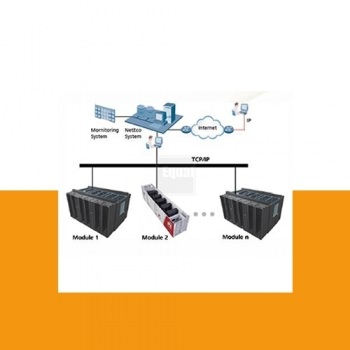
line-interactive UPS conditions and regulates the AC power from the utility, generally using only one main power converter. Figure shows the standard description of this topology from IEC standard 62040-3.
As its name implies, a double-conversion on-line UPS converts power twice. First, AC input, with all of its voltage spikes, distortion, and other anomalies, is converted into DC. This is very similar to the operation of the SMPS in IT equipment, as described earlier. And, like the SMPS, a double-conversion on-line UPS uses a capacitor to stabilize this DC voltage and store energy drawn from the AC input. Second, DC is converted back into AC that is tightly regulated by the UPS. This AC output can even have a different frequency from the AC input — something not possible with a line-interactive UPS. All of the power provided to the load equipment goes through this double-conversion process when AC input is present. When AC input goes out of a specified range, the UPS draws power from its battery so that the UPS output is not affected. In many double-conversion on-line designs, this transition inside the UPS between AC input and battery takes several milliseconds. Again, it is the capacitor in the “DC link” (see Figure) that provides stored energy to the inverter during these transitions. So, even though there is a brief interruption in power going into the “DC link,” the UPS output voltage is unaffected and continuous. In modern designs, an additional battery-charging circuit is almost always included in the topology, so a double-conversion on-line UPS typically has at least three power conversion stages. Figure illustrates this topology based on IEC standard 62040-3.